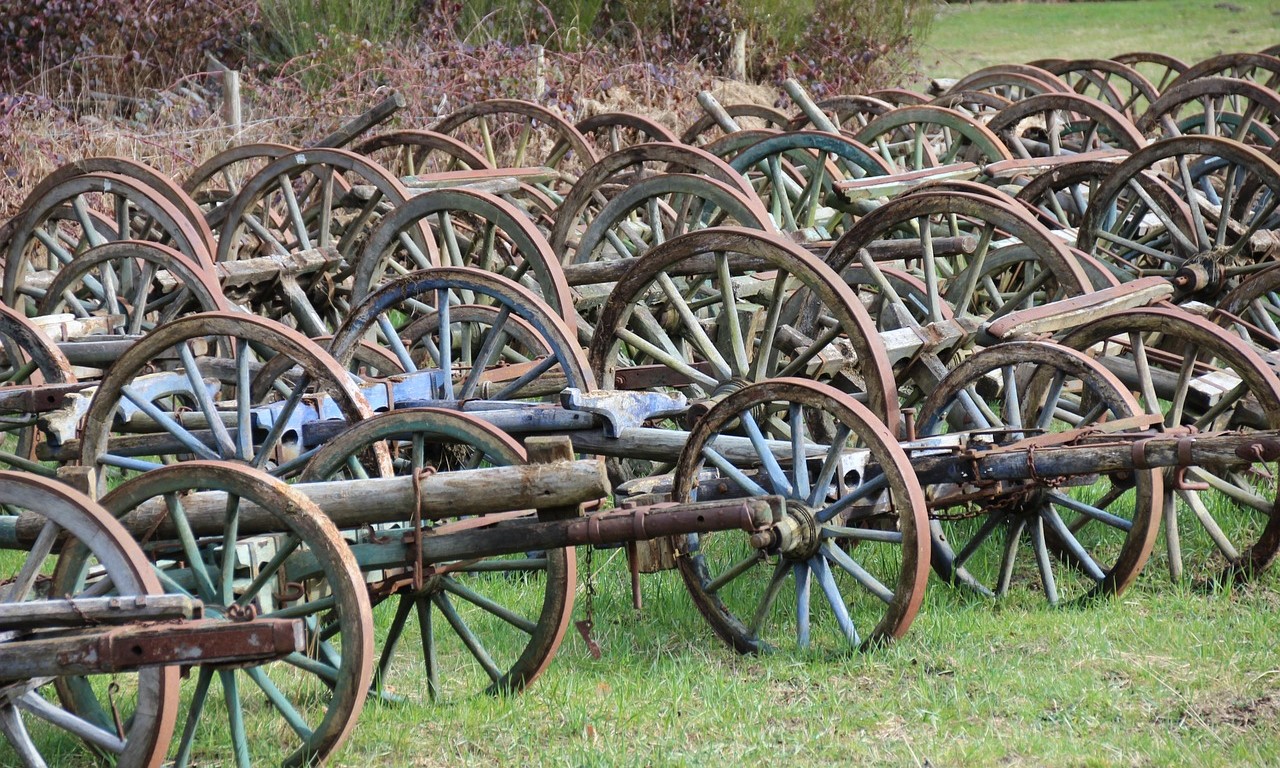The wheel and axle is one of the six simple machines, which are fundamental devices that make work easier by multiplying or changing the direction of force. It consists of a wheel mounted on an axle, with the wheel rotating around the axle. The wheel and axle work together to reduce friction and exert force over a distance, making it easier to move objects or perform tasks such as lifting, pulling, or turning.
The wheel and axle have been used by humans for thousands of years and have had a profound impact on technology and civilization. Ancient civilizations such as the Mesopotamians, Egyptians, and Greeks utilized the wheel and axle in various applications, including transportation, agriculture, and manufacturing. The invention of the wheel revolutionized transportation, enabling the development of wheeled vehicles such as chariots, carts, and wagons, which facilitated trade, exploration, and communication.
In modern times, the wheel and axle remain integral components of countless machines and devices, from automobiles and bicycles to pulleys and gears. The wheel and axle concept is utilized in a wide range of industries, including engineering, construction, manufacturing, and transportation. Its efficiency and versatility make it a fundamental principle in the design and operation of many mechanical systems, demonstrating the enduring significance of this simple yet ingenious invention.

What about wheel and axle interesting facts? Let’s take a look at these 10 interesting facts about wheel and axle.
- Ancient Origins : The wheel and axle is one of the oldest known mechanical inventions, with evidence of its use dating back to ancient Mesopotamia around 3500 BCE. Its invention revolutionized transportation and played a crucial role in the development of human civilization.
- Simple Machine : The wheel and axle is classified as one of the six simple machines, which are fundamental devices that make work easier by multiplying or changing the direction of force. The other five simple machines are the lever, pulley, inclined plane, wedge, and screw.
- Versatility : The wheel and axle concept is used in a wide range of machines and devices, from automobiles and bicycles to pulleys and gears. Its versatility and efficiency make it a fundamental principle in the design and operation of many mechanical systems.
- Reduction of Friction : The wheel and axle work together to reduce friction, making it easier to move objects or perform tasks such as lifting, pulling, or turning. By rotating around the axle, the wheel minimizes the surface area in contact with the ground or other surfaces, reducing frictional forces.
- Mechanical Advantage : The wheel and axle provide a mechanical advantage, allowing a smaller force applied to the rim of the wheel to produce a larger force at the axle. This principle is utilized in devices such as steering wheels and doorknobs, where a small input force results in a greater output force.
- Application in Vehicles : The wheel and axle is integral to wheeled vehicles such as cars, trucks, bicycles, and roller skates. By rotating around a central axle, the wheels enable smooth movement and efficient propulsion, facilitating transportation over various terrains.
- Pulleys and Gears : Pulleys and gears are examples of mechanisms based on the wheel and axle principle. Pulleys consist of a wheel with a groove around its circumference and an axle, over which a rope or belt is looped. Gears, on the other hand, consist of toothed wheels that mesh together to transmit motion and power.
- Inclined Planes : Inclined planes, another simple machine, can be combined with the wheel and axle to create more complex mechanisms such as screw jacks and ramps. By wrapping an inclined plane around a cylindrical axle, mechanical advantage can be gained for lifting heavy loads or raising objects to a higher elevation.
- Historical Significance : The invention of the wheel and axle had a profound impact on transportation, enabling the development of wheeled vehicles such as chariots, carts, and wagons. This revolutionized trade, exploration, and communication, allowing for the expansion of civilizations and the exchange of goods and ideas.
- Continued Innovation : Despite its ancient origins, the wheel and axle concept continues to inspire innovation and technological advancements in various fields. Engineers and inventors constantly find new ways to apply the principles of the wheel and axle to create more efficient, versatile, and powerful machines for the modern world.
The wheel and axle stands as a testament to the ingenuity of human innovation, with its simple yet versatile design revolutionizing countless aspects of daily life. From ancient civilizations to modern industries, the wheel and axle has played a fundamental role in transportation, machinery, and mechanical systems, providing a mechanical advantage and reducing friction to make work easier and more efficient. Its enduring legacy continues to inspire creativity and advancement in engineering and technology, serving as a cornerstone of mechanical design and a symbol of the power of human ingenuity. As we continue to harness the principles of the wheel and axle for new applications and inventions, we honor its timeless significance and celebrate its ongoing contributions to human progress and prosperity.



